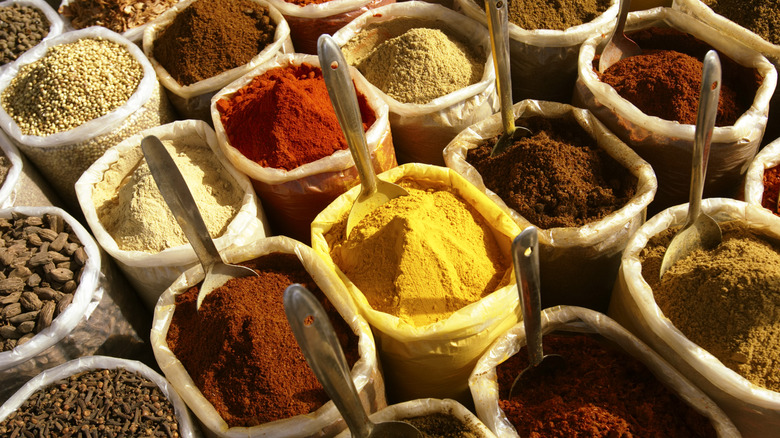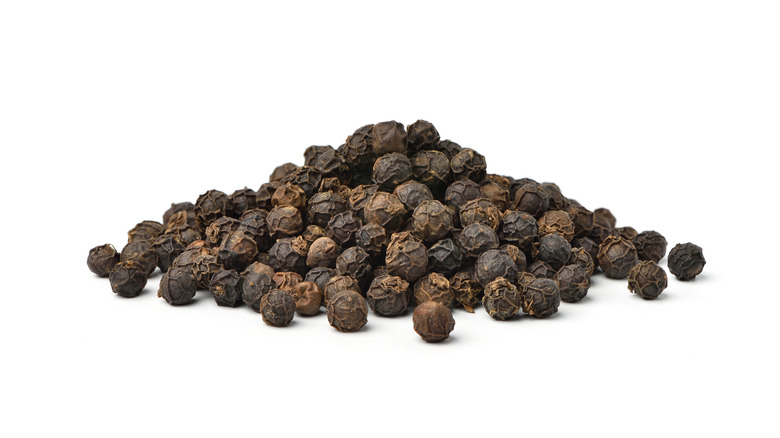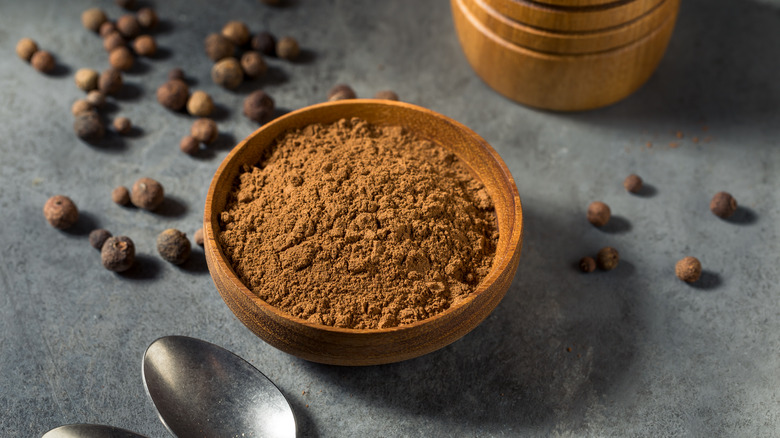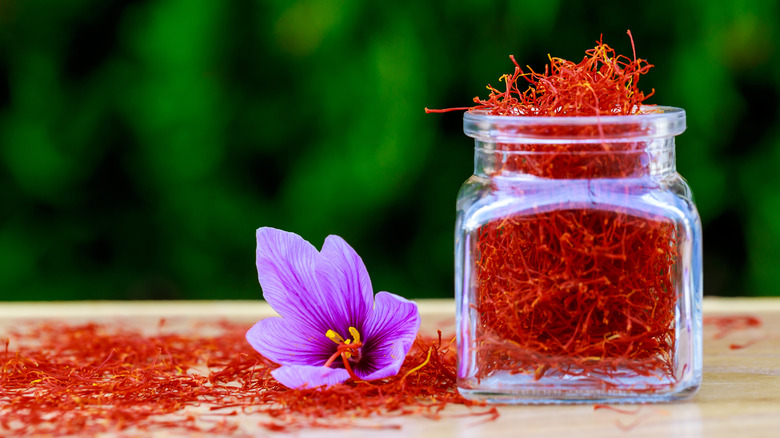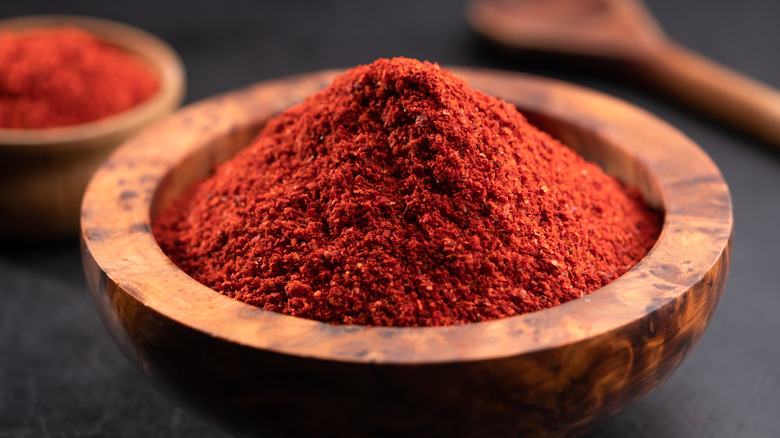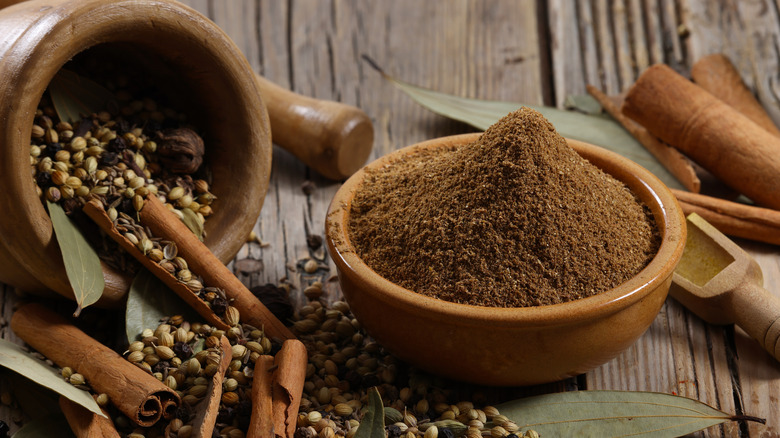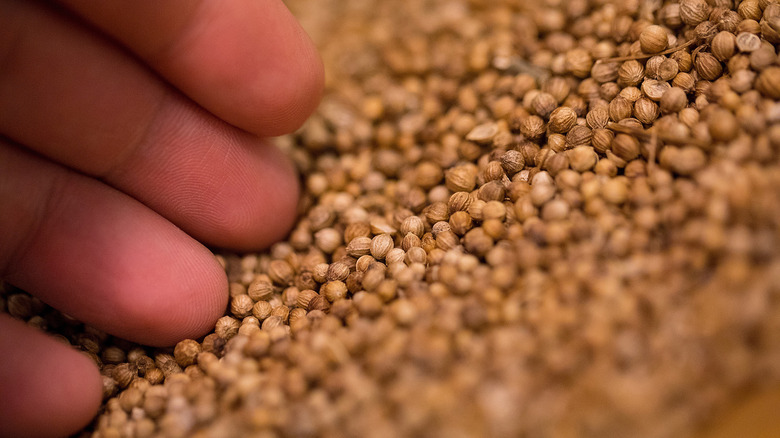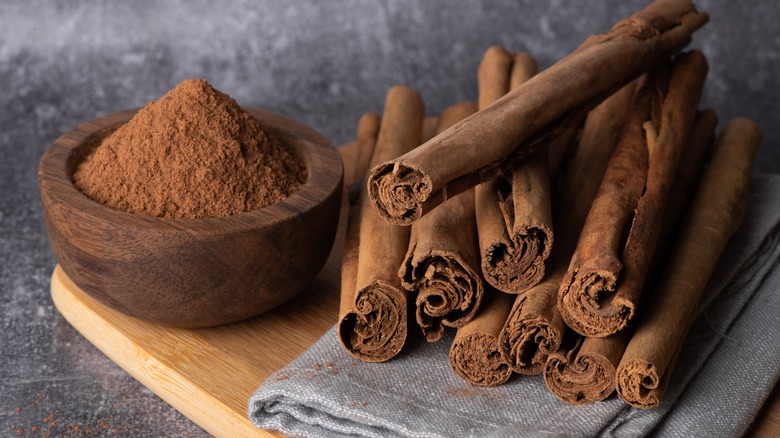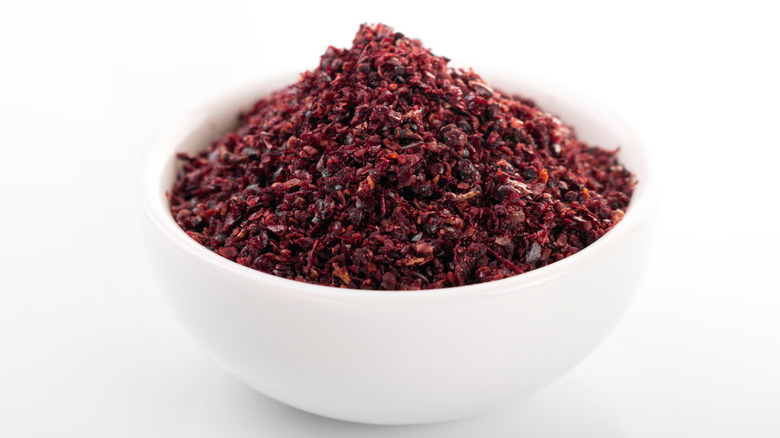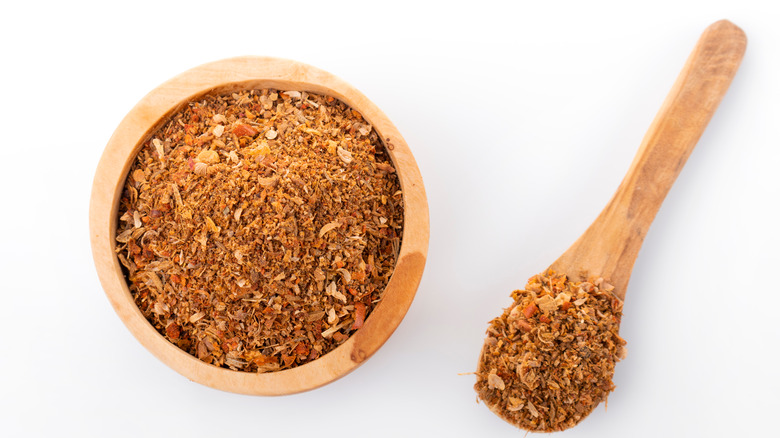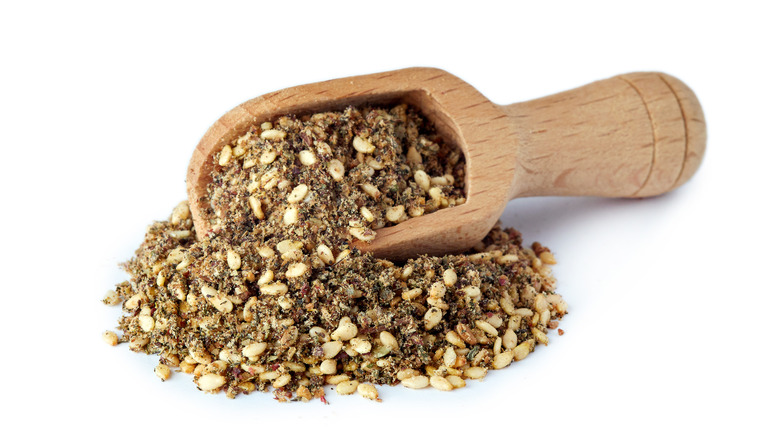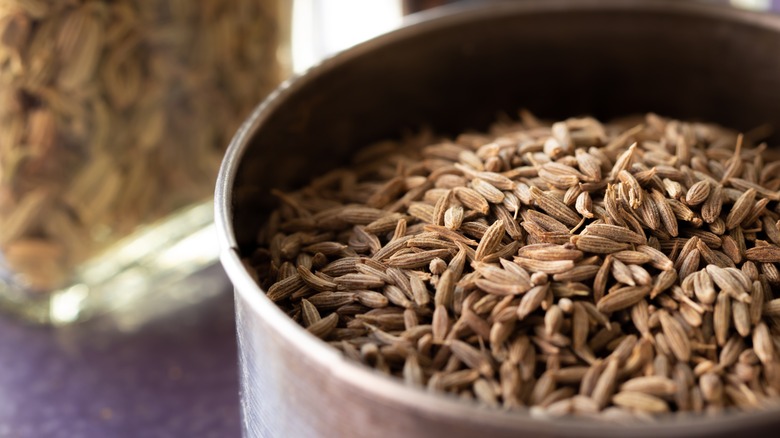Easy Spice Substitutes Home Chefs Need To Know
As the BBC reports, spices are so much more than flavorful ingredients that are added to recipes. In fact, they were — and are — some of the most important commodities in the world, being responsible for both the development of global trade routes and the improvement of many cultures' diets. While there are numerous spice-producing countries, we have India to thank for the proliferation of spices around the globe. Even today, India is easily the largest global producer of spices, growing around three-quarters of all global spice types and producing over two metric tons of spices per hectare (via Statista).
For many years, the spices brought from India and other nations were used as medicine, culinary ingredients, and class signifiers. In recent decades, spices have progressively moved from the medicine cabinet to the kitchen cupboard. Here, their impact is near endless, including the provision of flavor, color, and aroma.
For today's cooks — home and professional alike — spices are plentiful and relatively cheap, meaning access has never been greater. Unfortunately, this doesn't always mean that the necessary spice is at hand; we've all come to the unhappy realization that we lack a certain spice halfway through a recipe. However, the abundance of affordable spices means that, with a little ingenuity, a suitable substitute can easily be found.
Substitutes for black pepper
A seasoning only surpassed in prevalence by salt, black pepper is a perennially popular spice in world kitchens, especially those in the West. As such, you will almost always have black pepper on hand, so why the need for substitutes? The answer to that is quite simple: Many people, professional chefs included, believe black pepper to be grossly overused. One such example comes from the New York-based chef, Dan Ross-Leutwyler. "I hate black pepper," said Ross-Leutwyler. "It is a brute-force instrument that makes everything taste the same. Even after you've finished eating it, it's still there [..] I'll never understand why people put black pepper, for instance, on a steak. It just makes the meat taste like pepper — it doesn't bring out or enhance anything in the same way a few drops of lemon juice or a vibrant finishing oil will," (via Epicurious).
If you are seeking a similar impact to black pepper but are unwilling to revert back to this ubiquitous spice, the obvious choice is mild chili flakes, per The Guardian. These will provide the heat and kick for which many of us use black pepper. However, if you're not looking for a straight swap the possibilities are near endless, ranging from floral, mouth-numbing Sichuan peppercorns to the nostril-flaring, airway-clearing spice of strong mustard seeds.
Substitutes for allspice
In Western kitchens, an often-underutilized member of the kitchen cupboard is allspice, an ingredient ground from the berry of a tree native to Jamaica, per The Guardian. The true scope and importance of the spice is only fully realized in Caribbean cuisine where it is adored for the wide range of flavors and aromas it presents. The most prominent of these is a subtle warmth that fills the mouth upon eating; a sensation that is quickly followed by sweet and slightly spicy flavors (via MasterClass).
Thanks to allspice's prevalence in festive treats, such as Christmas pudding and mince pies, common substitutes include other warm, festive-feeling spices like cinnamon and cloves. A mixture of these two spices, along with a small amount of nutmeg, creates the best alternative for allspice. However, it should be noted that this blend may be lacking some of the allspice's more savory notes.
Substitutes for saffron
Saffron is easily the most expensive spice in the world. As such, it is easy to understand why people are eager to use cheaper substitutes in its place. If you are just searching for a way of tinting food the same seductive gold as saffron does, then turmeric is your best bet. This practice, which is particularly common when making paella, is not one that should be followed if authenticity is the goal. As reported by The Guardian, many see turmeric's use as a cheap trick
If it is the flavor of saffron you wish to replicate, you are in for a challenge. Saffron has a notoriously complex flavor profile and, as such, can be an extremely hard spice to substitute like for like. One spice that gets closer than most is safflower, a plant native to the Americas. As reported by Native Seeds Search, safflower was used by Spanish colonizers as a substitute for saffron. Since then, the plant has become more prominent for its heat-resistant oil, per Healthline. However, a liberal dash of safflower will go some way to replicate the flavors of saffron.
Substitutes for paprika
Britannica states that paprika is made from ground peppers of the capsicum annuum family. The peppers in this family vary immensely in appearance, taste, and spice level, ranging from the incredibly hot Carolina Reaper to your regular bell peppers. As paprika can be made with any members of the capsicum annuum family and in any combination, the taste and heat level of the spice can vary immensely. What's more, the production process can also affect the final taste, as attested to by smoked paprika, known in Spain as pimenton, per BBC Good Food. In order to circumnavigate this variation, paprikas are frequently divided and sold by spice level.
Unsurprisingly, one of the best ways to replicate the flavors of these different types of paprika is to substitute in different chilis. For smoked paprika, the best option is chipotle chilis, which are smoked jalapeños. When it comes to hotter paprika powders, try cayenne pepper, although most spicy chilis will suffice.
Substitutes for garam masala
Garam masala is a spice blend that generally includes cinnamon, nutmeg, coriander, and cumin amongst other spices. Extremely popular in India, NPR notes that nearly all households have their own version of the spice blend, each emphasizing a slightly different facet of the flavor profile.
Now, the best way to get around a lack of garam masala is to simply create the mixture yourself. However, if you lack some of the main ingredients, or would rather have a quicker alternative, there is another Indian spice blend that will do the job.
Chaat masala is one of the most beloved spice mixes in the whole of India and is used to flavor a huge variety of snacks, products, and dishes. While not matching the flavor profile of garam masala exactly, chaat masala fulfills the role of being a dish's focus thanks to its punchy flavors. These tend to be both sweeter and funkier than those present in garam masala, while an extra boost of umami makes it slightly more satisfying too. So, while you may notice that you've swapped out garam masala, the end result is likely to be so delicious that you do not mind.
Substitutes for coriander seeds
The slightly floral, citrus burst that comes when biting into a coriander seed is one of food's great pleasures. That is, as long as you're not among those who are genetically predisposed to hate the taste of cilantro. Whether you are seeking a non-soap tasting alternative, or if you have simply run out of coriander seeds, substitutes for these powerful flavor bombs are often required.
When it comes to substituting coriander seeds it is preferable to use another type of seed in its place. This is because seeds pack a uniquely concentrated amount of flavor. According to MasterClass, one of the best seeds to substitute coriander for is fennel seed. While these seeds lack the citrusy flavor coriander seeds are known for, fennel seed's anise-like taste will add a similar brightness to your dish. What's more, both seeds are commonly used throughout the same cuisines, most notably East Asian and Indian, meaning they complement similar ingredients.
Substitutes for cinnamon
Cinnamon is a popular spice that continues to be widely used across cuisines, countries, and cultures. In fact, according to a study by Digital Journal, the cinnamon market is expected to grow by 14% every year until 2028. There are two major flavors imparted by cinnamon: spice and sweet. As such, it is frequently seen as a "winter warmer" appearing in festive baked goods and drinks. However, the spice is widely used year-round in savory dishes cooked across the world from India to Mexico (via MasterClass).
When substituting cinnamon, it is important to know which of these two flavors you are seeking to replicate. If it is the festive sweetness, then nutmeg is the best cinnamon substitute. However, when you want to create a similar sense of subtle spice there are a number of options, with ginger being the most recommended. Of course, if you wish to accurately replicate the entirety of cinnamon's flavor profile then a mixture of the two should be used.
Substitutes for sumac
Sumac has a long culinary and medicinal heritage that stretches back thousands of years. Today, as a stalwart of Middle Eastern cuisine, the spice is commonly used to make spice blends such as za'atar, and as a garnish on dishes like hummus. The flavor of sumac is very citrus-like. Consequently, it is often used to bring brightness to a dish, without overpowering the other flavors.
Perhaps unsurprisingly, the best substitute for sumac is lemon, in particular the zest. This is because it provides the same citrus zing without introducing liquid into the recipe, which could affect the cooking process. Just like sumac, lemon zest acts as a natural flavor enhancer, as Jason Hawk, a chef at the Institute of Culinary Education, explained to Business Insider India. "The acid in lemon zest helps balance flavor in food, makes food taste more vibrant, and kickstarts saliva production in your mouth," said Hawk. "It can also balance sweet and salty flavors."
Substitutes for Ras el Hanout
When it comes to spice blends, Ras el Hanout stands head and shoulders above the rest thanks to its complexity. As reported by Tilda, the spice blend — the name of which translates into "head of the shop" (meaning the shop's best items) — can contain anywhere from 40 to 100 ingredients. Thought to have originated in the historic, spice-trading country of Morocco, Ras el Hanout immensely influences the flavor of dishes in which it is used. It imparts a complex, often warm flavor, although the exact blend that is used will influence its taste to a great degree.
Replicating the flavor of such a nuanced and powerful spice blend is a practice fraught with difficulty. The most immediate and obvious problem is that a single spice alone cannot come anywhere near matching Ras el Hanout's complexity. Consequently, it should only be substituted for other spice blends, the best among these being bahārāt. This Middle Eastern blend features a wide range of spices and flavors including cinnamon, cumin, and paprika (via MasterClass). While the flavor and impact of the two spice blends will differ, bahārāt provides an immense amount of flavor and complexity, allowing it to fill the hole left by Ras el Hanout.
Substitutes for za'atar
Za'atar is another extremely popular spice blend that is a staple throughout the Middle East and is featured in everything from Palestinian mana'eesh to salads. As with most spice blends, what constitutes za'atar changes greatly from region to region, as Jumana Bishara, owner of the Brooklyn-based restaurant, Tanoreen, explained in an interview with Delish. "There are many different varieties depending where in the Arab world you have it," said Bishara. "The ratios change, but it's usually a mix of dried oregano and/or thyme, sesame seeds, and sumac."
As one of the most important ingredients in za'atar, a handy substitution for the spice blend is sumac. This fresh and citrusy spice will add the required brightness to your dish. However, as BBC Good Food reports, it is best to avoid cooking the spice, as this will significantly dull its flavor. Of course, any mix of thyme, oregano, and marjoram will also be welcome as they will add an herbaceous facet also present in za'atar. However, unlike sumac, these herbs will do little to elevate the flavors of other ingredients around them.
Substitutes for cumin
As a member of the parsley family, cumin is a widely harvested — and used — spice. Available in both seed and powdered form, cumin is earthy and warm, which benefits numerous savory dishes by providing a solid base for other flavors to sing. The ability to provide a complementary base for many different flavors is what has made cumin such a popular spice around the world. It is found in everything from Indian curries, such as butter chicken, to barbeque marinades and even dry rubs.
The best substitute for cumin depends on what type of cumin you are swapping out. For cumin seeds, caraway seeds are recommended as they provide an earthy taste in a similarly punchy package. When it comes to powdered cumin, on the other hand, curry powder is a good alternative as nearly all brands use a significant amount of cumin in their blends.
